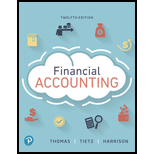
(Learning Objectives 1, 3, 4: Measure and account for the cost of plant assets and
| Jan 3 | Traded in equipment with accumulated depredation of $63,000 (cost of $130,000, for similar new equipment with a cash cost of $171,000. Received a trade-in allowance of $71,000 on the old equipment and paid $ 100,000 in cash. |
| Jun 30 | Sold a building that had a cost of $635,000 and had accumulated depreciation of $170,000 through December 31 of the preceding year. Depreciation is computed on a straight-line basis. The building has a 40-year useful life and a residual value of $295,000. Blair received $135,000 cash and a $325,750 note receivable. |
| Oct 31 | Purchased land and a building for a single price of $340,000 cash. An independent appraisal valued the land at $108,900 and the building at $254,100. |
| Dec 31 | Recorded depreciation as follows: Equipment has an expected useful life of five years and an estimated residual value of 5% of cost. Depreciation is computed using the double-declining-balance method. Depreciation on buildings is computed using the straight-line method. The new building carries a 40-year useful life and a residual value equal to 10% of its cost. |
Requirement
1 Record the transactions in Blair’s journal.
Want to see the full answer?
Check out a sample textbook solution
Chapter 7 Solutions
Financial Accounting Plus MyLab Accounting with Pearson eText -- Access Card Package (12th Edition)
- Hi expert please help me this questionarrow_forwardRequired information Use the following information for the Exercises below. (Algo) [The following information applies to the questions displayed below.] On December 1, Jasmin Ernst organized Ernst Consulting. On December 3, the owner contributed $84,310 in assets to launch the business. On December 31, the company's records show the following items and amounts. Cash Accounts receivable $ 10,200 15,200 Office supplies 3,550 Land 45,990 Office equipment 18,310 Accounts payable Owner investments 84,310 8,740 Cash withdrawals by owner Consulting revenue Rent expense Salaries expense Telephone expense Miscellaneous expenses $ 2,340 15,200 3,910 7,350 790 610 Exercise 1-19 (Algo) Preparing a statement of owner's equity LO P2 Frnst Genculting Hint Jasmin Ernst Capitalonarrow_forwardHelparrow_forward
- Provide correct answer please general accountingarrow_forwardWhat is the value of ending long term debt? Accounting questionarrow_forwardCompany B had an estimated 230,000 direct labor hours, $486,000 manufacturing overhead, and 27,000 machine hours. The actual were 220,700 direct labor hours, 38,600 machine hours, and $505,000 manufacturing overhead. They determine overhead based upon machine hours. Calculate the predetermined overhead rate.arrow_forward
- Century 21 Accounting Multicolumn JournalAccountingISBN:9781337679503Author:GilbertsonPublisher:Cengage
 Cornerstones of Financial AccountingAccountingISBN:9781337690881Author:Jay Rich, Jeff JonesPublisher:Cengage Learning
Cornerstones of Financial AccountingAccountingISBN:9781337690881Author:Jay Rich, Jeff JonesPublisher:Cengage Learning Excel Applications for Accounting PrinciplesAccountingISBN:9781111581565Author:Gaylord N. SmithPublisher:Cengage Learning
Excel Applications for Accounting PrinciplesAccountingISBN:9781111581565Author:Gaylord N. SmithPublisher:Cengage Learning College Accounting, Chapters 1-27AccountingISBN:9781337794756Author:HEINTZ, James A.Publisher:Cengage Learning,
College Accounting, Chapters 1-27AccountingISBN:9781337794756Author:HEINTZ, James A.Publisher:Cengage Learning,





